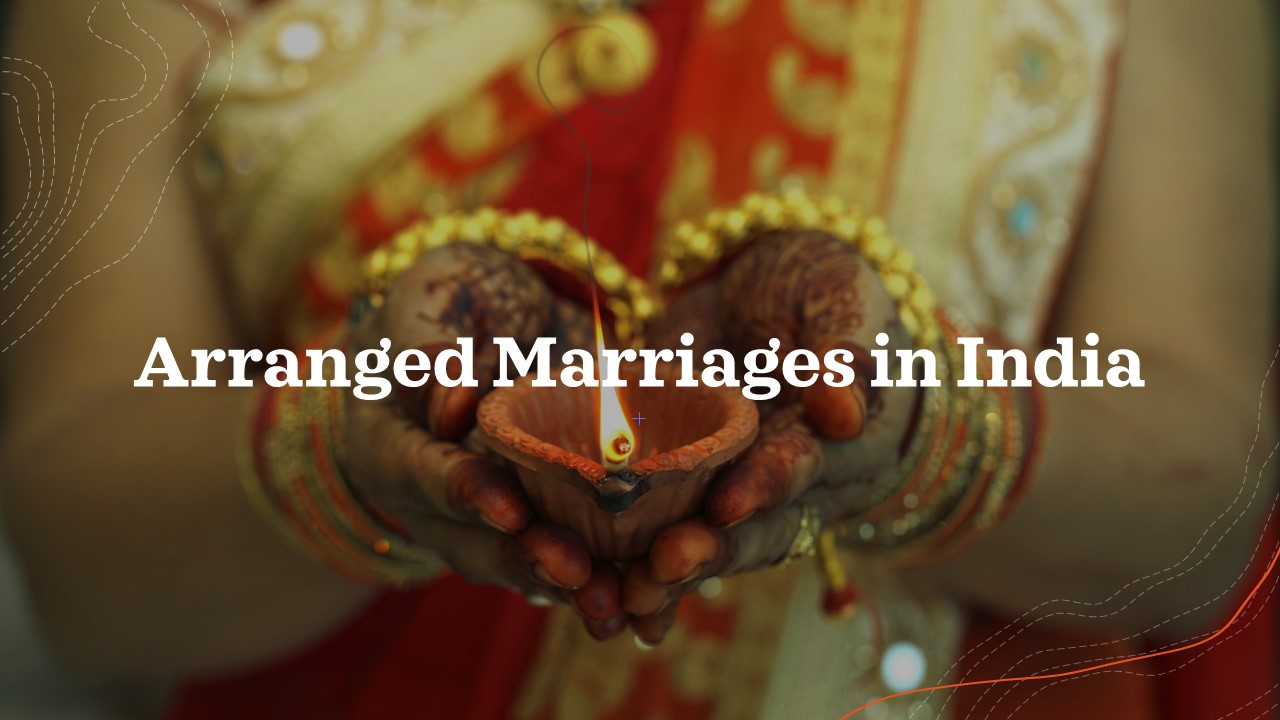In traditional arranged marriages, the bride and the groom have limited possibilities in making their choice of whom to marry and how the wedding is planned. Other family members, religious leaders, community elders, or special matchmakers choose a good match for the couple and make sure they get married in the right way.
The freedom of marital choice for prospective spouses and specific practices of how weddings and marriages are organized vary across different collectivistic countries, in urban and rural contexts, and in traditional or relatively modernized societies. There are no universal or common practices for arranged marriages that fit all collectivistic countries. Cultural traditions of arranged marriages vary across traditional societies.
A Collectivistic Perspective on Arranged Marriage
Arranged marriages are quite common in collectivistic cultures because of the high value of individual interdependence in social groups and families. Marriage is a matter of family, not only of a bride and a groom. Although they may feel their romantic attraction and experience love for another man or woman, as it is beautifully depicted in Indian movies, they usually understand that an arranged marriage is a cultural tradition. Therefore, they usually consent to such an arrangement.
They may have a certain degree of freedom in their choice of a partner depending on cultural variations across regions, social groups, and castes in India. However, they have very limited options to decide how wedding ceremonies are organized. This is a significant issue for the family and cultural tradition. The wedding is an important life experience not just for the couple but also for their families and all others involved. The planning, preparations, and rituals engage strong sentiments and feelings.
The collectivistic conception of self in these societies includes not only the individual herself or himself but also other family members and interdependent connections with them. Therefore, a man or woman in a collectivistic culture understands that the choice of spouse and marriage is a responsibility rather than a freedom. They feel interdependent with their family, so they adjust their decisions and actions accordingly. They feel responsible for the family’s interests and for the future of their marriage. Romantic passion is of secondary importance.
The perspectives of Western individualistic cultures and Eastern collectivistic cultures on arranged marriage differ substantially.
Nevertheless, modernization, urbanization, education, and increased social mobility in those societies have moved modern marital practices away from arranged marriages.
What Is the Tradition of Arranged Marriage in India?
Indians typically marry in their early twenties. Parrents or other kin usually arrange the mating process. The cultural patterns of mating and marriage are diverse in different parts of India. These practices also vary in rural and urban contexts and across traditional Indian castes. Variations are observed even within the same geographical regions (Banerjee, Duflo, Ghatak, & Lafortune, 2013).
Indian culture looks at marriage as a social institution from a collectivist perspective. This view considers the selection of a prospective partner as a family matter. So, young men and women respect the kin’s opinion and engage in a discussion with the family. Matchmaking is an important process that may include professional matchmakers or matrimonial websites. The process is perceived beyond the simple dichotomies of arranged versus love marriages. The modern distinctions between these two types of marriage are no longer as clearly apparent as they once were. Contemporary cultural practices do not enforce a choice between the person and the family. Young men and women treat the family’s permission as a significant but equal factor (Bhandari, 2018).
A wedding is a significant event not just for the couple but also for their families. This celebratory ceremony must be perfectly arranged in terms of rituals and timing. The preparation for the event and involvement in it engage intense sentimental emotions for many who attend. In addition, the arrangement of processes and conditions also calls attention to cultural values, norms, social obligations, kinship bonds, and economic resources (Heitzman & Worden, 1996).
Modern Arranged Marriages in India
Nowadays, in India, social and economic mobility, the proportion of the middle class, and modernization have been expanding, especially in urban areas. New generations of educated young men and women from the middle class have more control over their marital choices and the ways in which they marry (Kamble, Shackelford, Pham, & Buss, 2014).
These young people accept arranged marriage as a cultural practice, yet they modernize its meaning. They manage to reconcile the cultural traditions of family-making with their motives for personal growth. They figure out how to live in Indian culture’s modernity (Sharangpani, 2010).
Since Indian society is regionally and socially diverse in terms of religious and cultural practices (Hindu, Christianity, Buddhism, and Muslim), the extent to which modern innovations in traditions evolve varies across different parts of the country, social classes, and castes.
Transformations of Gender Roles and Arranged Marriages in India
Generally, in modern India, arranged marriages are gradually declining. The increasing geographic mobility of the population, changing relationship networks, and social media act as cultural factors of social change. They open up new avenues for young Indians to choose a marital partner and pursue marriage.
Currently, extended families and kin are less inclined and less capable of overseeing the matchmaking of their children. They are less directly involved in the marital process. It is especially true among Indian urbanites and those living abroad (Agrawal, 2015; Allendorf & Pandian, 2016).
Perceptions of gender roles and the status of women are changing. The transformations in the gender image of a new Indian woman are publicly visible. They are pervasive in many personal narratives and web-based representations. The new gender role models combine cultural rootedness and a modern lifestyle in their relationships between men and women. Therefore, the images of love and marriage are gradually changing. They adjust to the new realities and lifestyles (Allendorf & Pandian, 2016; Titzmann, 2013).
